Anti-tank infantry weapons in Afghanistan
The war in Afghanistan 1979-1989 It does not provide the necessary data for a broad analysis of the use of anti-tank weapons in the fight against armored vehicles, similar to what can be done on the example of the Second World War, the Arab-Israeli wars or operations in the Persian Gulf. Nevertheless, all the opposing sides massively used anti-tank melee weapons. One of such parties was the irregular armed formations of the Afghan opposition, on the other - units and units of the Limited contingent of the Soviet troops and the Armed forces of Afghanistan. However, only one of these parties, the formation of an armed Afghan opposition, used anti-tank weapon systems for their intended purpose - to fight the enemy’s armored vehicles. So what is the quality of the anti-tank systems used by the parties to the conflict?
The answer to this question is simple. Anti-tank weapons were used as weapons of fire support for infantry units. For this, reactive anti-tank grenades and grenade launchers (RPGs), mounted anti-tank grenade launchers and recoilless guns (LNG and BO), as well as portable anti-tank missile systems (ATGM) proved to be suitable. We will not consider such specific anti-tank weapons as hand and rifle anti-tank grenades. The first - because of their rare use in Afghanistan in 1979-1989., The second - due to the lack of them in service with the warring parties in the specified period.
Of particular note is the analysis of the use of hand-held anti-tank grenade launchers in Afghanistan as infantry fire support weapons. This class of weapons, which appeared in the arsenal of the world's leading armies in the late 40s, made a real revolution in anti-tank weapons. But with the advent of RPGs on the battlefield, they became not only an effective means of combating tanks and other armored objects, but also a reliable weapon for destroying various fire weapons of the enemy and his manpower located in field and city-type shelters. The emergence of a class of weapons such as a hand-held anti-tank grenade launcher was facilitated by a technological breakthrough in the design of dynamo-reactive (outdated) weapons and the use of anti-tank munitions with a cumulative warhead in it. Hand-held anti-tank grenade launchers significantly increased the infantry’s combat capabilities to conduct independent combat operations in isolation from armored vehicles, outside of artillery and aviation support. An analysis of the use of RPGs by irregular armed formations (partisans, rebels and rebels) suggests that RPGs are "artillery of partisans", which qualitatively increased the effectiveness of their operations against regular troops.
In the “Afghan war”, effective actions of the Mujahideen against the units of the Oksva and government forces in the highlands and irrigated areas of the valleys (the so-called green) without the use of RPGs and other anti-tank melee weapons would not have been possible. Afghan insurgents rather quickly assessed the degree of threat posed by tanks, infantry fighting vehicles and armored personnel carriers, which forced the leadership of the armed Afghan opposition to supply their combat groups and troops with anti-tank weapons, the main of which was the 40-mm hand-held anti-tank grenade launcher RPG throughout the “Afghan war” -7 in its Chinese version Type 69. Much less often, as a rule, in the first half of 80's. In the armament of the Afghan Mujahideen, 40-mm RPG-2 grenade launchers (Type 56, PRC) and the RPG-7 of domestic, Chinese, Iranian or Egyptian production were encountered. A separate class of anti-tank weapons of our enemy in Afghanistan is a recoilless rifle Type 56-2 (75-mm Chinese version of the American recoilless M20 guns) and 65 type (82-mm gun DKZ-82K65, developed on the basis of the Soviet BW-10) and Soviet heavy grenade launchers SG-82. Separate, since, apart from the tasks of the anti-tank struggle, they were assigned the task of artillery support of the armed opposition groups, for which there were shots with a fragmentation grenade in the ammunition "recoilless".
Hand-held anti-tank grenade launchers have become the most widespread anti-tank means of combat groups of the armed opposition. As the analysis of the fighting in Afghanistan at the beginning of 80-s shows, the RPG density was one grenade launcher on the 8-12 man, but by the end of the 80-s. their saturation of combat groups almost doubled. From 1986-1987 the saturation of combat detachments with various recoilless guns is also increasing sharply. Moreover, this trend continued until the withdrawal of Soviet troops from Afghanistan in 1989. Already by the end of 80's. each organized combat group consisting of 25-30 man was armed with 82-mm recoilless guns Type 65 and 4-6 RPG. In addition, in each detachment consisting of 3-4 combat "infantry" groups there was a group of weapons armed with 75-mm guns, Type 56-2, mortars and rocket systems.
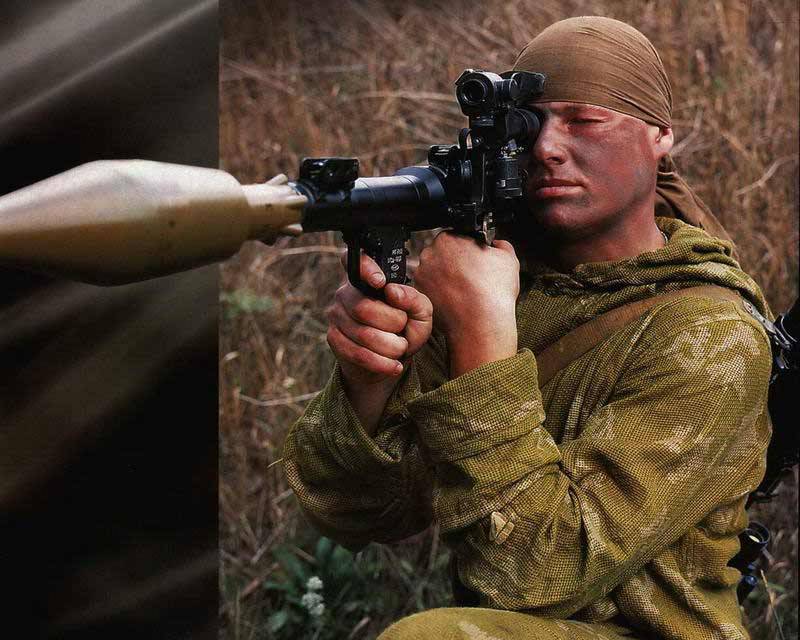
TTX RPG-7
Sighting range of a grenade, m | |
PG-7В, PG-7ВМ | 500 |
PG-7L | 350 |
PG-7BP | 200 |
Penetration, mm | |
PG-7В, PG-7ВМ | 500 |
PG-7L | 350 |
PG-7BP | 600 |
Maximum flight speed of grenades PG-7В, m / s | 300 |
Weight of a grenade launcher with a PGO-7 sight, kg | 6,2 |
Calculation, pers. | 2 |
TTH LNG-9M
Sighting range of grenade, m | |
PG-9V and PG-EMU (direct fire) | 1300 |
OG-9 (separate aiming) | 4200 |
Combat rate of fire | up to 6 rpm |
The initial speed grenades PG-9, m / s | 435 |
The initial speed grenades FG-9, m / s | 316 |
LNG mass with optical sight, kg | 50,5 |
The length in the combat position (max), mm | 2110 |
Payment | 4 people (commander, gunner, loader and carrier) |
Such an impressive arsenal of anti-tank weapons was by no means necessary to fight the Mujahideen with the armored vehicles of the government and Soviet troops. Of the 147 tanks and 1314 BTR (BMP), lost by our troops in Afghanistan, less than 20 percent were destroyed by anti-tank weapons. We suffered the main losses of armored vehicles from anti-tank land mines during the “mine war”. Anti-tank grenade launchers in Afghanistan, perhaps, were the first to declare themselves as the main weapon of fire support. Our opponent has even developed his own tactics of their combat use in the mountains and green. First of all, it consisted in the massive use of anti-tank grenade launchers in close combat, when the Soviet units lost their main trump card - fire superiority over the enemy in artillery and the domination of aviation. Using the guerrilla tactics "belt grabbing", knowledge of the terrain, tactics and techniques of the opposing side's actions, the rebels became invulnerable to artillery and aviation fire. Initially, the Soviet units were not prepared for such conditions of battle, not only in moral and psychological terms, but also "materially." In the early years of the "Afghan war" in the armament of the infantry units of OXVA, there were not enough of rifle grenade launchers, RPGs and other melee weapon support systems.
In fact, the material problem was caused by subjective reasons - lack of experience of treatment and, consequently, unwillingness to use “bulky” weapons in battle. Later, the troops will have a “trench” experience, which will be transferred from one carrier to another, acquiring more sophisticated methods of confrontation to the “quirky” opponent. It is then that an understanding will come that it is imperative to abide by the war, and without which you can do without. Alas, military science did not pay attention to the Afghan experience at that time. Our strategists continued to teach students of military academies to lead regiments and divisions along snow-covered training grounds, and tactics demanded that the cadets of military schools "keep" an even order of battle in a linear attack. Legally, the Afghan experience began to be generalized only at the level of the Commander of the Turkestan Military District and the 40-th combined arms army from the middle of the 80-s, but did not migrate to the combat regulations. However, "in Afghanistan" officers and sergeants learned a number of rules for themselves, the violation of which, sooner or later, could lead to unjustified losses. One of them is not to allow the enemy to move closer to a distance when the fire of his own artillery or aviation represents a greater danger than the fire of the enemy. The mortars, heavy machine-gun and grenade launchers, which are currently in service with infantry, were designed to eliminate such conditions, allowing the enemy to be held at a considerable distance from their combat formations. When the enemy carried out "capture for the belt" and the distance of the battle was reduced to several tens of meters, the fire of his artillery became so dangerous that "manual artillery" entered into battle - reactive anti-tank grenades and anti-tank grenade launchers, and in critical cases manual fragmentation grenades . In the highlands and the kishlak zone with a huge number of natural and artificial obstacles, impenetrable by small arms bullets, only artillery ammunition could inflict serious damage on the enemy. In such circumstances, RPG becomes an indispensable weapon for the infantryman. In addition to a hand-held anti-tank grenade launcher - a regular rocket launcher weapon - the firepower of the infantry units was significantly increased by reactive anti-tank grenades, popularly called a disposable grenade launcher. In Afghanistan, our troops massively used the RPG-18 “Fly” anti-tank grenade and appeared in the middle of the 80-s. RPG-22 "Net". And, unlike the grenade launcher, any infantryman could use it. The one-time grenade launcher became an additional weapon of an arrow-machine gunner or, more precisely, an individual anti-tank weapon.
The Soviet units were armed with an RPG-18 anti-tank grenade “Fly” from the first days of the “Afghan war”. However, the lack of practice of handling new weapons for many servicemen often led to tragic consequences as a result of violation of the rules of treatment. The most characteristic of these was the attempt to lay down the transport-launch device, diluted for firing, and the resistance of the breech cut of the grenade to parts of the body or other objects. However, the cause is not the grenade itself, which has shown its high combat effectiveness. By the end of the first half of the 80's. The USSR Armed Forces adopted a more technological one in the production of the RPG-22 "Net".
The initial euphoria caused by the availability, ease of use and combat effectiveness of disposable grenade launchers has been replaced by a sober assessment of their effectiveness in various types of combat. Yes, it was a convenient and effective fire weapon, but only when conducting close combat. The sighting range of shooting up to 200 m in the RPG-18 and 250 m in the RPG-22 did not allow the use of this weapon in the conduct of fire fighting at medium and long distances. Being an indispensable individual infantryman’s anti-tank weapon in Zelenka or a kishlak, in the mountains and the desert, he could not compete in range with the RPG and BO of the Mujahideen. It was the inadequate aiming range of his shooting that explained the presence of anti-tank grenade launchers in OXVA units. Having the ability to flexibly change the composition of the armament of a platoon or group, the commanders armed them accordingly with the conditions of the combat mission. Often, hand-held anti-tank grenade launchers and reactive anti-tank grenades were used in a comprehensive manner. For example, during flight the warehouse armed opposition zelyonkoj group SWAT capture in an amount 12 military was armed 6-8 RPG-18 (22), and provide a group - 4-6 RPG-18 (22) and RPG-7 (Type 69 or RPG-16) with 5-10 rounds of ammunition. In addition to these, the SPG Specialized Forces armed group also armed the RPO-A Bumblebee Infantry Flamethrowers, but this particular class of weapon is not considered in the article.
TTH DKZ-82K65
Sighting range of firing by cumulative fragmentation grenade, m | 1000 |
Penetration, mm | 180 |
Combat rate of fire | up to 5-6 rpm |
Mass BO, kg | 29 |
Payment | 4 people (commander, gunner, loader and carrier) |
If the first Soviet RPG-18 "Fly" did not cause complaints in the troops, the more modern RPG-22 "Netto" was disliked. The designers laid in it a large sighting range (250 m), increased the caliber to 72,5 mm and, accordingly, armor penetration. However, as the operating experience of the RPG-22 showed, the reliability of this anti-tank weapon was to be the best. In the batch of 10 grenades, several grenades did not necessarily break or did not leave the channel of the starter at all. It got to the point that Soviet soldiers refused to take "extra ballast" to the mountains, using the RPG-22 only for training purposes at the shooting range. It is characteristic that this was not a marriage of some party, but a systemic flaw.
For all its simplicity, the reactive grenade required a certain experience of treatment. However, after a few hours of training and execution of shooting practice, the soldier not only lost his fear of the RPG, but also had a desire to have this weapon in battle with him. Unfortunately, such a desire, when faced with a serious combat mission, was not always satisfied, since the RPG reserve in the units was limited. For all its effectiveness, reactive anti-tank grenades had a significant drawback - the relatively short range of effective, read accurate, fire. In this regard, the RPG-7 hand grenade launcher, which, with its “light hands” constituting staffing personnel lists, turned out to be “superfluous” in Afghanistan, was a more versatile weapon. In the special purpose units of OKSV, the RPG-7 grenade launcher was generally excluded from their staff. Considering the realities of “fulfilling international duty”, the intelligence officers were forced to use captured grenade launchers of the “69” type. The Chinese "Border" turned out to be much lighter than the domestic RPG-7, but lost to him in range of aimed shooting at 150. However, the targeting range of 350 and the Chinese RPG was enough to cover the effective range of a reactive anti-tank grenade.
In the special forces units, the trophy RPN 69 was used to solve the same tasks as domestic RPG-18 and RPG-22 anti-tank grenades, as well as the RPG-16 non-standard anti-tank grenade launcher. Special Forces officers used various RPGs to destroy vehicles in enemy caravans, manpower and fire weapons in shelters (SPS - rock machine-gun constructions), behind clay fences (duels), stone and mud walls of the buildings), in caves, between stones, in crevices of rocks and ravines. Manual anti-tank weapons had an indisputable advantage over artillery in firing accuracy and fire safety in melee. Another important task of the RPG was the destruction of various obstacles and engineering structures, whether it be doors or walls of buildings and fences, pedestrian bridges across numerous canals or storage rooms.
TTX RPG | Type 69 | Type 56 |
Sighting range, and | 350 | 150 |
Armoring, mm | 180 | 110 |
Length, mm | 950 | 650 |
Weight, kg | About 5 | 2,83 |
Shot weight PG-2, kg | 2,2 | 1,84 |
The initial speed of the grenade, m / s | 120 | 103 |
Combat rate of fire, rds / min | 4-6 | 4-6 |
RPG fire was used for the destruction of various material means and weapons of the rebels (engineering and power equipment, automotive technology, heavy weapons systems and ammunition).
In the course of the assault, RPG fire made holes in the walls, through which, later on, fragile grenades were thrown into the premises and the capture group penetrated. So, if it was necessary to penetrate a serf-type household into a thick mud wall, a shot was made with an RPG, then, in a narrow opening designated at break in the cumulative grants, an explosive charge was attached and a blast was made in an explosive way. With a certain skill of the assault group, this operation took less than a minute of time.
During the assault and capture of the firing positions of heavy weapons, various buildings and warehouses of the enemy, the practical range of combat use of the RPG did not exceed 50-100 m. RPG-18 and RPG-22 rocket launchers were quite suitable for such combat conditions. In those cases when the destruction of insurgent vehicles at distances greater than 69 m was required for ambush operations, our troops preferred to use Russian RPG-200 and RPG-7 grenades with 16 optical scopes. Particularly accurate was the fire from the RPG-2,7 “Strike” grenade launcher, the direct shot of which was 16 m. Experienced grenade launchers, firing from the RPG-540 from a distance of 16-500 m, easily fell into the engine or cab of the car, the SPS embrasure or Duvale (pise fence) first grenade. The targeting range of the RPG-800 was approximately equal to the range of recoilless guns, and the accuracy of shooting was much higher than the accuracy of the latter. No wonder our soldiers dubbed the RPG-16 "manual non-reel".
Anti-tank recoilless guns or mounted grenade launchers (both terms refer to one weapon system) became a formidable fire weapon in the hands of the Mujahideen by the middle of the 80s. It was from this period that there was a tendency to increase the firepower of armed opposition units, by saturating them with heavy weapons. Bearing significant losses from the infantry units and special forces of the Soviet troops that had gained experience in waging a mountain war, the Mujahideen could no longer use only small arms and RPGs against them. They needed mobile artillery systems of armament, meeting the tactics of guerrilla warfare. The best for these tasks were recoilless rifles and mortars of small and medium caliber. No-hitboxes were more comprehensible to former dekhkans and artisans than mortars, which require illiterate, for the most part people, knowledge of mathematical formulas for calculating hinged shooting data. It was no more difficult to handle the sighting devices of the bezotkatka than with the mechanical sights of small arms.
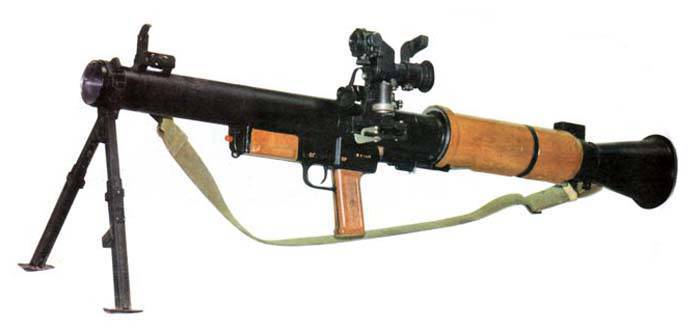
TTX RPG-16
Sighting range, m | 800 |
Direct shot range at chain height 2м, m Length in combat position, cm Length in folded position, cm | (520) 110,4 64,5 |
Weight, kg | 10,3 |
Shot weight PG-16, kg | 2,05 |
The initial speed of the grenade, m / s | 250 |
Maximum speed of grenades, m / s | 475 |
Combat rate of fire, rds / min | 4-5 |
Payment | 2 people (rocket launcher and assistant rocket launcher) |
The recoilless guns in service with the Afghan Mujahideen had an aimed range of the anti-tank grenade 800 and 1000 m (Type 52 and Type 65, respectively), and the fragmentation 2-3 times. The morally outdated SG-75 heavy-duty grenade launcher, developed in the USSR at the end of the 40s, had an aimed range of anti-tank grenade of the entire 300 m, and was rarely used by the Afghan Mujahideen.
Having the opportunity to hit armored targets and infantry at a distance of 800-1000 m with fire without any tactics, the Mujahideen no longer sought to approach the units of the regular troops, which was characterized by inevitable losses in a bloody melee, but opened fire from a safe distance. Cleverly masking the firing positions of the stalkless in dense thickets of green or among the stones, wetting the ground with water behind the bell and in front of the muzzle of the guns, they achieved the steadiness of the fighter position of the battlefield on the battlefield. Masking the position of recoilless and reducing dust formation during the firing allowed the rebels to go unnoticed after a series of shots or secretly change the firing position in case of their detection.
Fire recoilless guns of the sample 50-60-ies. because of the design and technical features of the first types of dynamo-reactive weapons and subjective reasons, it was not as accurate as the fire of modern grenade launchers, but it did some harm to the troops. First of all, it adversely affected the morale of the troops. The close explosions of the grenades BO, which was preceded by “tickling nerves” and the growing rustling of flying ammunition, forced the crews of armored vehicles and infantry to look for more reliable shelters, to abandon certain types of maneuvers and open unattended preemptive fire - “in that direction”. Taking advantage of the confusion of the troops, the mujahideen were able to bind units with the help of fire from recoilless guns and, using the enemy’s confusion, to withdraw their infantry from the terrain blocks blocked by troops or create conditions for other types of maneuver (envelopes, attacks, counterattacks, etc.). In the tactic of "capture for the belt," it was the artillery and sniper fire of the rebels that created the conditions for their rapprochement with the blocked units. There are dozens of examples of such “Afghan veterans”. Personally, in my practice there were several such episodes. With regard to the effectiveness of anti-tank fire in the armaments of the BW rebels, out of the five known episodes of the defeat of the BMP and BTR of my detachment, none of the machines were hit by a shotgun from a recoilless gun - only an RPG fire. This is despite the fact that under the shelling of recoilless guns, the armored group fell quite often.
Calculations of recoilless enemy weapons became priority targets for destruction with all fire weapons. If the firing position of the recoilless box was opened, it was immediately amazed. A good example is the battle near the village of Alishang in the province of Laghman 13 in March 1987. The calculation of the rebels' recoilless guns opened fire on the T-62M tank given to us from the southern slope of the Karandzhgar ridge. The firing position of the recoilless was in 600-700 m from the target with an excess of about 300 m. “Spirits” managed to make only three shots, and not hitting a fixed target, while the tank crews and mortars did not suppress the calculation revealed by me with response fire.
Given the remoteness of the firing positions of the BO and the ineffectiveness of small arms fire to fight them, the infantry units fought with the calculations of recoilless guns with weapons of fire support of the infantry. The main heavy weapons of our infantry and special forces in Afghanistan were 12,7-mm heavy machine-gun NSVS-12,7 (see the magazine “Weapon No.12, 2009”), 30-mm automatic grenade launchers AGS-17 and ... hand-held anti-tank grenade launcher. The latter, for heavy weapons, are solely due to the specifics of their use in Afghanistan. This is especially true of the RPG-16 “Kick” grenade launcher, which in Afghanistan was an indispensable weapon of infantry support. Unfortunately, in the Soviet
TTX RPG-18 "Fly"
Sighting range, m | 200 |
Direct shot range at target height 2 m. M | 135 |
Length in combat position, cm | 105 |
Length in the stowed position, cm | 70,5 |
Weight, kg | 2,6 |
RPG-18 is served by one person, the time of its transfer from the traveling position (on the belt) to the fighting position (shooting from the knee or standing) is calculated in several seconds.
troops he lived out his last days, as he was soon removed from service with the USSR Armed Forces. The reason for this was the “insufficient armor penetration of the anti-tank grenade when firing on modern tanks ...”. So this decision was wrong, confirmed not only the “Afghan war”, but also the fighting in the North Caucasus. The armor penetration capability of the PG-16 grenade was sufficient to destroy lightly armored vehicles, but the possibility of destroying infantry in field and city shelters at a distance of up to 800 m, nowadays not a single anti-tank grenade launcher ... Moreover, if the Kalashnikov assault rifle has an 1000 targeting range m with a very strong stretch, then the PG-16 grenade on its 800 m fell, as they say, to a point. In terms of its combat characteristics, the RPG-16 “Strike” was in no way inferior, and in many respects it was superior to the recoilless guns of the Mujahideen. The reconnaissance units of the special forces OKSVA quickly assessed the effectiveness of the RPG-16 fire. In some separate special forces (SPGN), the non-standard RPG-16 “Strike” became an indispensable fire support weapon. In particular, in 154 and 334 in oOSpN, an irregular calculation of the RPG-16 was in every special forces company.
Similar weapons from the Afghan insurgents were not observed, however, as well as reactive anti-tank grenades. They had quite enough light anti-tank grenade launchers Type 56 and Type 69, which they used very effectively. Mujahideen grenade launchers trained in RPG shooting in numerous camps and training centers in Iran and Pakistan proved how effective a hand-held anti-tank grenade launcher could be in melee combat. Sometimes the "spirits" fired RPGs even at infantry units or individual servicemen moving in the open. The effectiveness of such a fire in the critical moments of the battle did not embarrass them, and they did not experience any deficiencies in the ammunition. Each rocket launcher in the area of his group had a secret, where they were placed in a sealed 5-10 original grenade package. Usually, the rocket launcher and his assistant were carrying a wearable ammunition from 4-5 shots. One of the grenades was necessarily in the barrel of the grenade launcher, and the rest were placed in special bags or were worn on a rope like a small arms on a belt.
The Soviet soldiers, brought up by their commanding fathers in the tradition of the most severe security measures and the course of firing, the presence of a grenade in the barrel of a weapon when carrying an RPG caused confusion. Fortunately, it passed very quickly, and our soldiers, at the request of our officers, sent a grenade launcher shot into the barrel and carried the grenade launcher with the trigger lowered by a safety catch. All that was required for a shot was to take the weapon off the safety, pull the trigger, point the weapon at the target and fire the shot. After that, send the second shot, filed by the grenade launcher assistant, and act according to the situation.
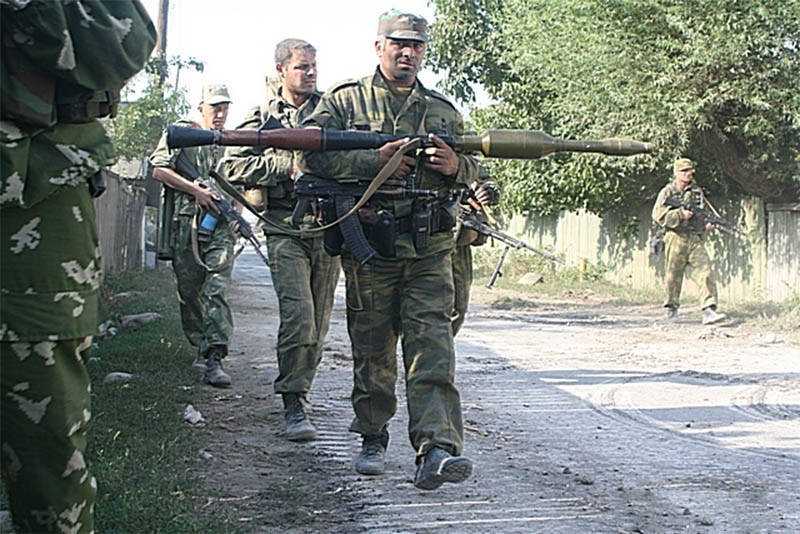
Noteworthy are the very methods of combat use of RPGs developed by rebel grenade launchers in Afghanistan. Since the RPG-7 is quite simple to handle, it was quickly mastered by people without any military training, and sometimes completely illiterate. The Afghan rebels developed their own methods and methods of combat use of RPGs, far from those described in the Manual on grenade launchers and tactics textbooks. Moreover, the differences are already visible starting from the shooting techniques, where the Instruction was limited to only three positions - lying, kneeling and standing. It was in the methods of using RPGs in Afghanistan that the following appeared: conducting salvo fire of several RPGs; concentrated fire of 2-3 RPGs on one armored target; firing at helicopters in the air; firing from an RPG with a hinged trajectory at the enemy on reverse slopes of heights, in ravines and behind obstacles (yards, buildings, fences, gardens, etc.); over shelters on the slopes of the mountains in order to hit the enemy with grenade fragments and rockfall; making breaches in the walls and knocking out doors; shooting at a distance exceeding the aim. It can be said about the last method of firing that the combat effectiveness of such fire approaches zero, but when grenades begin to burst in the air above a column of armored vehicles or in combat formations of helicopters, events take a different turn. The range of a grenade in the air depends on the time of the self-liquidator. In the Chinese-made PG-7 grenades used by the Afghans, when firing at an angle of 30-45 degrees, it was about 700-900 m. This is the range when it is almost impossible to notice a grenade launcher in battle.
The past twenty-odd years after the end of the “Afghan” war have significantly changed the fleet of hand-held anti-tank weapons and weapons of fire support of infantry. First of all, shots with RPG-7B ammunition and its later modifications showed shots with the TBG-7 fragmentation and thermobaric grenade, enhanced armor anti-tank grenade with the PG-7BR tandem warhead and the caliber fragmentation OG-7 grenade. which significantly expanded the combat capabilities of this grenade launcher. In the class of "disposable grenade launchers," new jet anti-tank and assault grenades (RSHG), small-sized jet flamethrowers (MPO) have appeared. A new class of domestic anti-tank weapons has emerged - a heavy grenade launcher developed by the experts of the NPO Basalt 105-mm RPG-29 Vampire.
To believe that modern combat operations can only be conducted with precision-guided weapons is erroneous. They still have a large niche for hand-held anti-tank grenade launchers, as the most effective anti-tank weapon and fire support weapon in the melee. Also in demand in modern combat recoilless guns or heavy grenade launchers. Despite the fact that modern anti-tank systems in terms of firing range and, especially, armor penetration significantly outperform the “no recoil”, it is still too early to write them off as an anti-tank weapon. Their number, especially in the arms of the third world countries, makes it more serious to treat this class of anti-tank weapons.
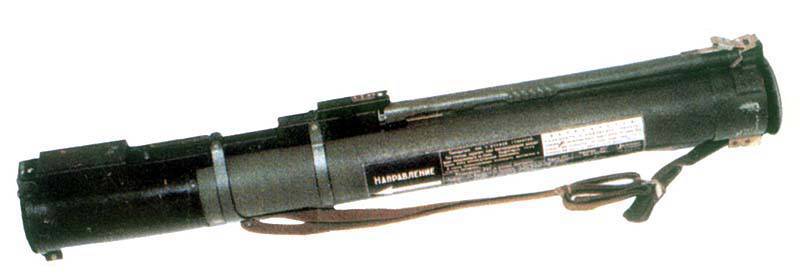
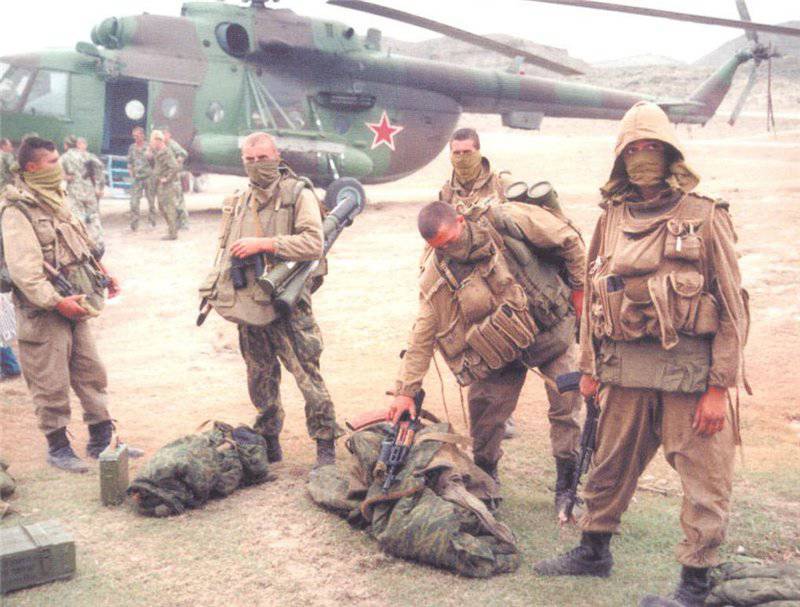
TTX RPG-22
Sighting range, m | 250 |
Direct shot range at target height 2, m | 160 |
Length in combat position, cm | 85 |
Length in the stowed position, cm | 75,5 |
Weight, kg | 2,7 |
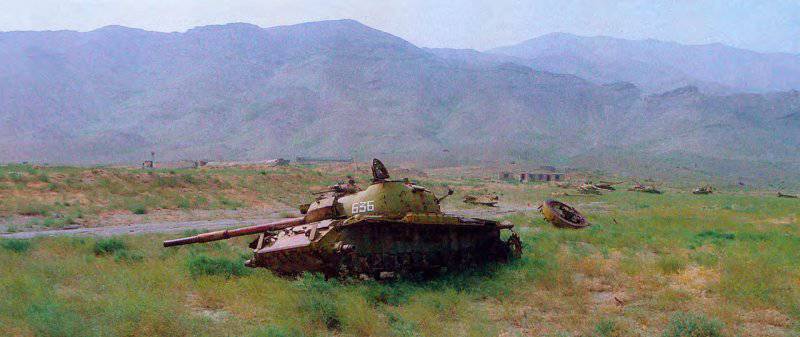
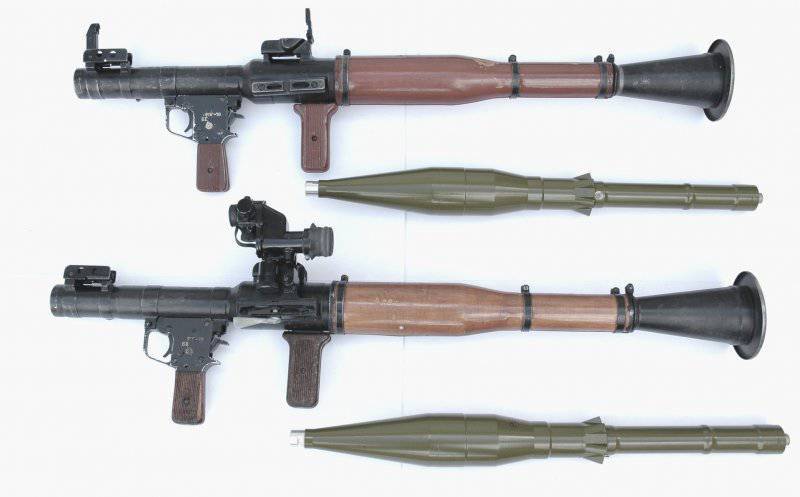
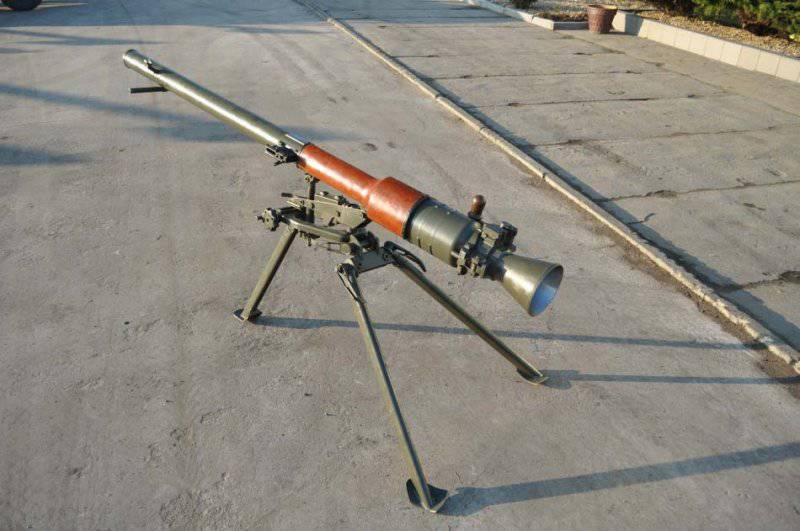

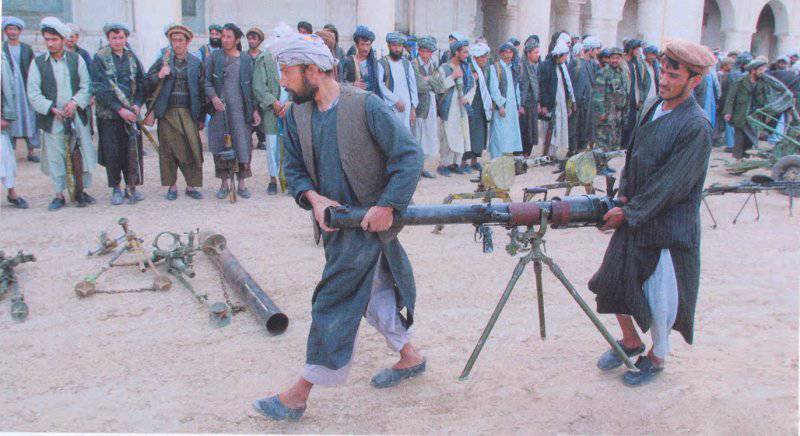
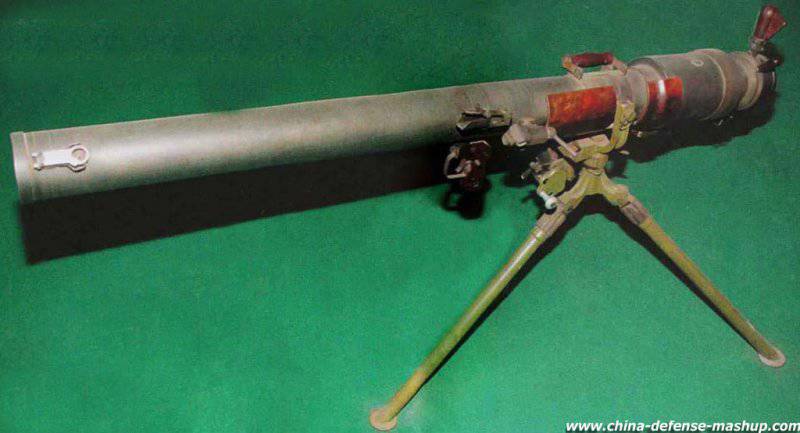
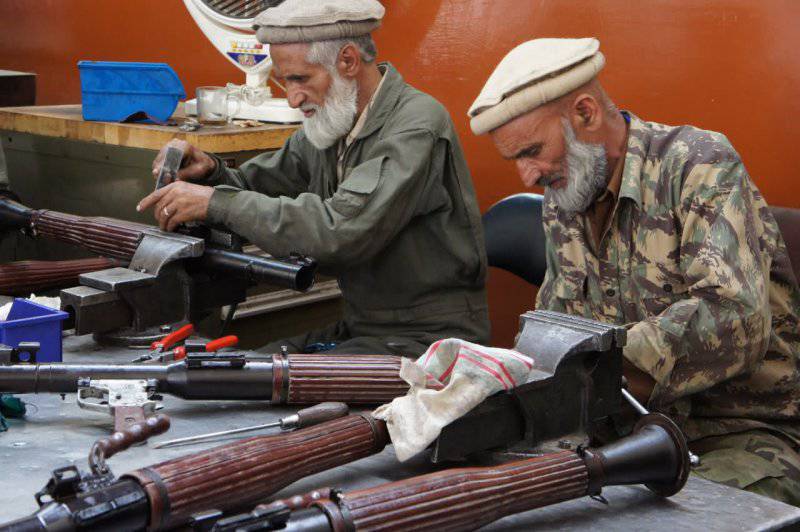
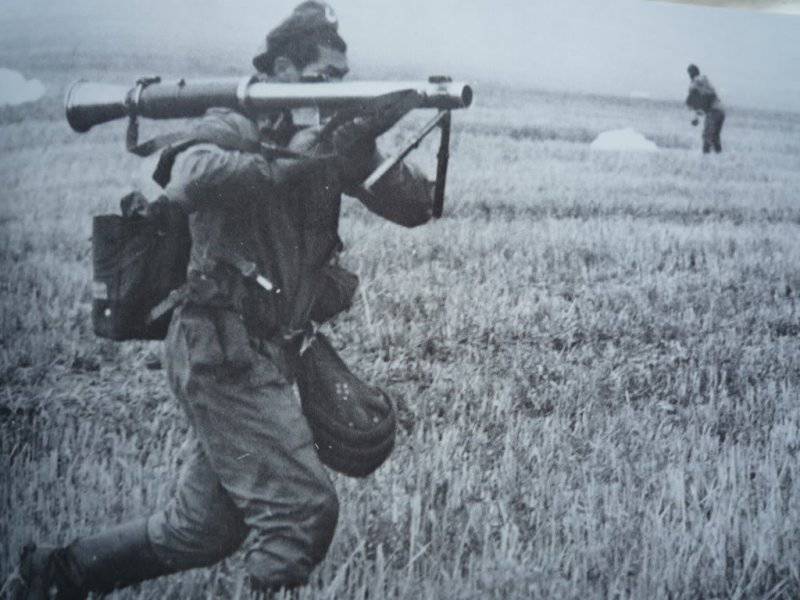
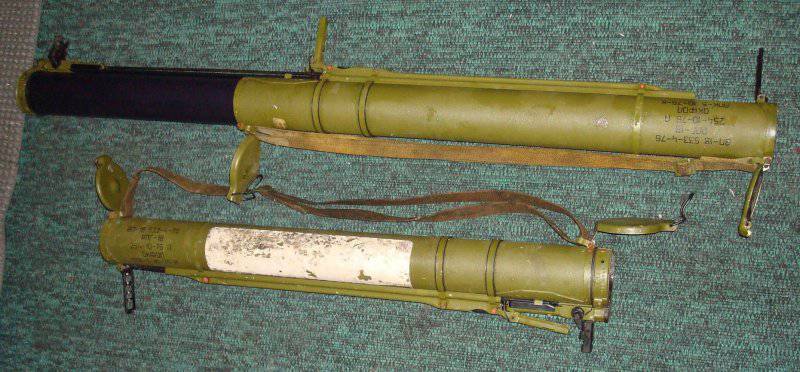
Information